Hollow devices used to transmit liquid, gas, steam, etc. are called pipes.
Pipes are produced from different materials, depending on the place they are used and the characteristics of the fluid that will pass through them. These can be categorized as:
- Steel pipes
- Seamless Steel Pipes
- Welded Steel Pipes
- PVC pipes
- Concrete pipes
- Font (cast) pipes
- Pipesmade of copper alloys
- Pipes made of aluminum alloys
Welding to pipes also must be applied in order to obtain practical end-products. This blog post will explain this welding process as a whole.
1. Preparation of Pipes for Welding
Pre-preparation of the pipes before welding improves the quality of the weld seam, ensures its physical appearance and economical work. In the preparation stage for welding, preparation is made by paying attention to the thickness of the part, the appropriate welding mouth, and the smoothness of the equipment.
1.1. Preparation of Small Diameter Pipes for Welding
The following procedure is followed for the preparation of welding to pipes.
- Marking
- Cutting
- Cleaning
- Practice
- Opening welding bent
1.1.1 Pipe Beveling Methods
For pipes with a wall thickness of more than 4 mm, the weld mouth is opened in order to increase penetration. Small diameter pipes can be welded with files, pipe cutters, grinders, and oxy gas.
1.1.2 V Bearings in Pipe Welds
During the spotting of the pipes, a “V” bed is used to ensure that the axes are opposite each other and remain stable during welding. In special cases, angle iron is also used.
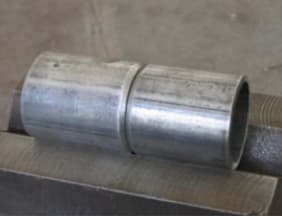
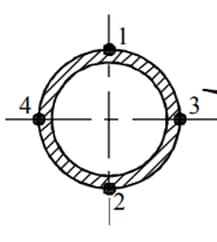
1.1.3 Cleaning Weld Joints
The mouths of the pipes of the same diameter, which are cut and to be joined at welding, are cleaned. There should be no axial misalignment in the pipes to be joined by welding. Otherwise, welding to pipes might not be performed correctly.
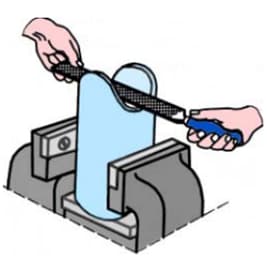
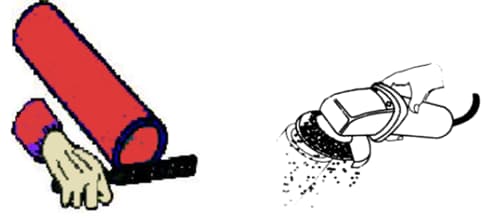
1.1.4 Considerations in Pipe Welding
- Marking and cutting the pipes to be welded to size.
- Alignment of the cut parts.
- Centering the parts from four points with the axis points opposite each other.
- The center spacing should be equal all around the pipe for a succesful welding to pipes.
1.1.5 Welding the Pipes
The ends of the pipes are lapped so that all sides are equal. Pipes with a wall thickness of up to 3 mm are welded by leaving some space between them (approximately half the wall thickness). The machine is started and the amperage is adjusted. It is centered on four sides with its axes aligned, and the slag of the centers is cleaned with a welding hammer or wire brushes. Welding is done starting from this point.
2. “T” Welding of Small Diameter Pipes
2.1 Inter Sections
The area formed between two pieces that intersect each other is called a cross-section. In the welding to pipes intersecting, before welding, the pipes must be lapped together to form a cross-section using various monitoring tools (saw, drill, file, etc.).
2.1.1 Lapping of Parts
Before starting the “T” welding to pipes, it is lapped with half-round and round files so that the upper pipe fits into the lower pipe. The cross-section of the lower pipe is drilled with a drill, starting with a small diameter gradually. The lower tube hole is ovalized so that the upper tube is fully joined.

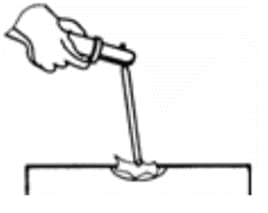

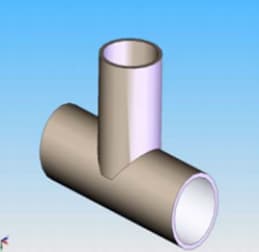
In joining welds, it is very important to lap the parts together and create axes and directions. Axes and angles to be created must be checked before the parts are centered. The contact points created in the lapping of the parts are one of the important factors affecting the weld seam. The weld gap to be left between the weld joints increases the strength of the weld seam. The penetration is increased by leaving a welding gap of half the pipe wall thickness.
2.1.2 Centering of pipes with open cross-sections
One of the most important stages of the preparation of the pipes for welding is the centering of the pipes. Centering should be done in the direction of the axes at the joints. After the centering process for joining the pipes, the axial deviations that occur due to the welding shrinkage in the parts should be brought to the square.
2.1.3. The importance of Leaking in Pipe Welds
The welding to pipes must ensure impermeability. Especially in hydraulic, pneumatic, natural gas, and heating systems, sealing is important. Welds are checked with compressed air and water.
2.2 Making ‘T’ Welding
It is very important to control the molten bath during welding, as invisible pores and slag will cause leaks in welded joints. During welding, the welding electrode angle is different at each point. For this reason, the electrode should be held at an angle of 75 – 80′ to the instrument surface. It is a must for successful welding to pipes.
In horizontal welding of pipes, the electrode is started from the upper point and welded by turning. It should be welded without any gaps at the start and endpoints of the electrode. In electric arc welding, sufficient curvature temperature is achieved with amperage setting and the use of appropriate electrodes.
The arc length should be equal to the diameter of the electrode. It is very important to keep this distance under control by the welder depending on the electrode spinning speed. Welding speed is also one of the important factors affecting the shape and penetration of the weld seam. Increasing the speed causes a decrease in the width of the weld seam and a decrease in penetration. The decrease in the welding speed causes the weld seam to pile up.
2.2.1 Cleaning the Weld Seam
While the welding to pipes is being completed, the entire perimeter seam should be completed by cleaning the slag at the endpoints of the seam and maintaining the welding parameters. The welding joint should be cleaned with steel wire brushes as the gases emitted during the combustion of the electrode will cause corrosion by combining with the humidity of the air around the weld joint area.
3. Preparation of Large Diameter Pipes for Welding
3.1 Cutting
The pipes must be cut in the dimensions and position of the place to be installed. Commonly used cutting methods; with oxy gas, cutting electrodes, plasma, cutter of a hand grinder, band and hydraulic saws, cutting tools, etc. done by methods.
3.2 Cleaning
As a result of cutting operations, burrs can form inside the pipes. For the burrs not to cause blockages in future operations like performing welding to pipes, burrs and foreign matter (oil, rust, paint) residues must be cleaned. To clean them, it is necessary to use chisels, files, hand, and stationary grinders, wire brushes, and sandpapers, and chemicals. For the strength of the weld, no foreign matter residue should be left.
3.3 Lapping
The cut and cleaned pipes must be lapped together before being welded. Otherwise, welding errors may be encountered. To do the lapping process, we can use the machines usually utilized for weld beveling and cleaning.
3.4 Intersection and Beveling
Welding to pipes is not always done end-to-end (linearly). Pipes are laid in ways such as angled turns in different directions, the intersection of pipes coming from different directions, and the joining of pipes of different diameters. In such cases, it is necessary to remove the intersection. Pipes with a wall thickness of more than 5 mm must also be welded. In such cases, we use special beveling methods. The value of the bevel angle is between 50-90˚.
4. Butt Joint Welding of Large Diameter Pipes
After the preparations for cutting, cleaning, lapping, and beveling are made, the parts centered on the V bed are drawn in a horizontal position by giving appropriate spacing (The root seam can be drawn in TIG welding). Then, after the slag is cleaned, the other passes are drawn.
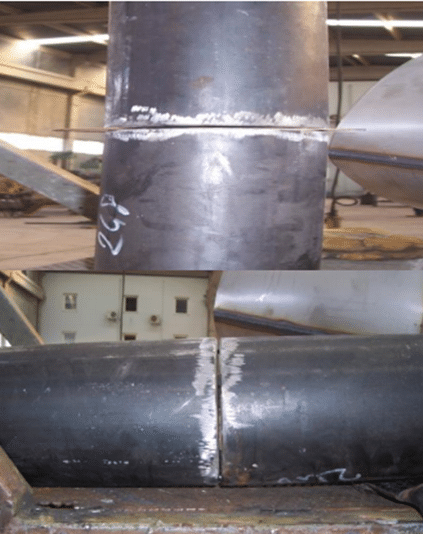
When centering, a template is used between two parts. The parts are neatly centered and evenly spaced.

The root seam is pulled (could be TIG welding.) The second pass of the weld is cut and cleared.
5. Flange Welding Of Large Diameter Pipes
Pipes sometimes need to be detachably connected to pumps, boilers, or each other. Welding is one of the non-removable joints, so flanges are welded to the places where the pipes are to be removed and the flanges are connected with bolts. When maintenance or replacement is to be made on the piping systems, the flanges are removed from their bolts and necessary work is done.
5.1 Matters to be Considered in Flange Welding
- A flange is selected according to the conditions and material of the place to be connected.
- Flanges are centered on the pipes after the connection bolt holes meet each other.
- In the length calculation, the required gasket thickness should be also calculated to ensure tightness.
- There may be distortions due to heating during welding.
5.2 Flange Welding to Large Diameter Pipes
- If necessary, the weld mouth is opened and lapped to the pipe and flange.
- Pipe and flange are centered at 90˚, perpendicular to each other or at the desired angle with equal spacing.
- Pre-annealing is applied if necessary.
- Internal corner welding is drawn according to the welding position.
- Some flanges are also welded internally.
- If necessary, heat treatment is applied at the end of welding.
- After welding, tightness and pressure control are performed.

